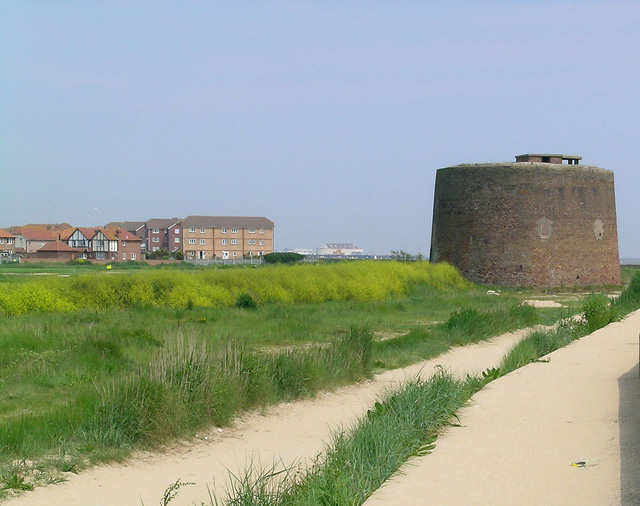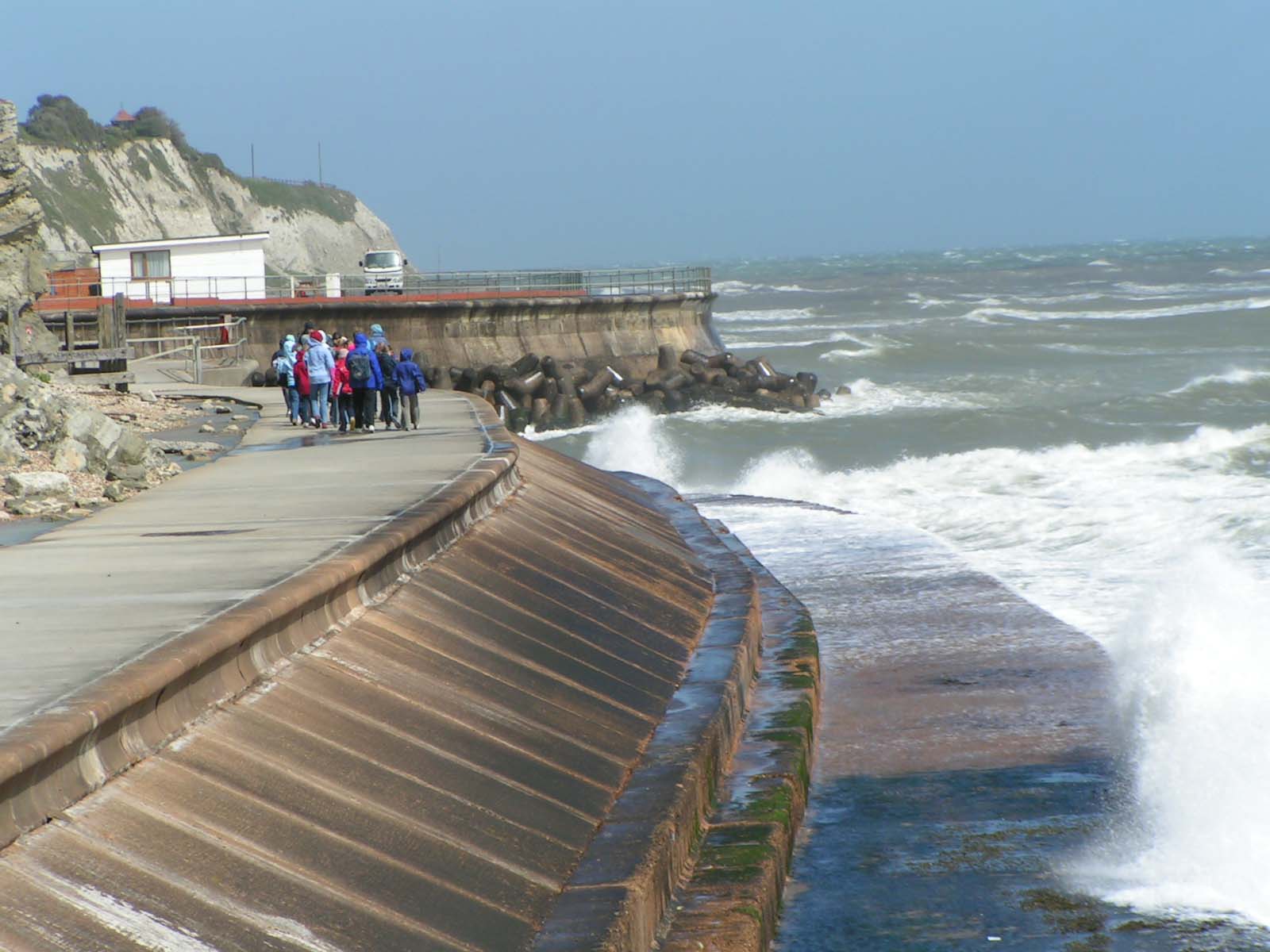|
Lee-over-Sands
Lee-over-Sands, is a small coastal hamlet in the Tendring district of Essex, England. It is located close to the mouth of the River Colne into the North Sea and is in the civil parish of St Osyth. A sandspit called Colne Point is offshore from the hamlet. Colne Point Nature Reserve, a shingle ridge enclosing a saltmarsh, is to the west of the hamlet on the site of a World War I gravel works. Jaywick Martello Tower is east of Lee-over-Sands. The area is subject to flooding, and was severely affected by the North Sea flood of 1953 when the seawall was breached in many locations near the village. Thirty-seven people died in nearby Jaywick, east of Lee-over-Sands. In January 2017 following a threat of coastal flooding, an evacuation of 2,500 homes in Lee-Over-Sands and nearby Jaywick was planned but in the event not required. A number of houses are on the seaward side of the seawall, on Beach Road. One house on Beach Road won the RIBA The Royal Institute of British Arc ... [...More Info...] [...Related Items...] OR: [Wikipedia] [Google] [Baidu] |
St Osyth
St Osyth is an English village and civil parish in the Tendring District of north-east Essex, about west of Clacton-on-Sea and south-east of Colchester. It lies on the B1027, Colchester–Clacton road. The village is named after Osgyth, a 7th-century saint and princess. Locally, the name is sometimes pronounced "Toosey". It is claimed to be the driest recorded place in the United Kingdom. History Before being renamed after the Abbey of St Osgyth built there in the 12th century, the village was called ''Chich'' (also spelt ''Chiche'' or ''Chick''), from an Old English word ''cic'' meaning "bend", a reference to St Osyth Creek. Under King Canute/Cnut (reigned 1018–1035), Chich was assumed as part of the royal demesne and granted to Earl Godwin. By him it was given to Christ Church, Canterbury. After the Conquest it was transferred to the See of London . The village is the location of an important mediaeval abbey, St Osyth's Priory, named after Osgyth, a semi-legendary Saxo ... [...More Info...] [...Related Items...] OR: [Wikipedia] [Google] [Baidu] |
Jaywick
Jaywick is a coastal village in the Tendring district of Essex, England, west of Clacton-on-Sea. It lies on the North Sea coast of England, from London and from Colchester. It was constructed in the 1930s as a holiday resort for Londoners, but has, over time, been officially named the most deprived area in the country. The land on which the village is built was originally fields and salt marsh and unsuitable for agriculture. It was purchased by the entrepreneur Frank Stedman in 1928 to build low cost, affordable holiday homes for working-class families, and became a popular holiday destination throughout the 1930s. After the Second World War, a shortage of housing meant the properties became permanently inhabited despite not being built for this purpose. Many holiday homes are now in a state of disrepair, and the local community have resisted demolition. Jaywick has significant problems with unemployment and is at risk of flooding, despite several attempts by the local counci ... [...More Info...] [...Related Items...] OR: [Wikipedia] [Google] [Baidu] |
Jaywick Martello Tower
Jaywick Martello Tower is a renovated Martello tower at Jaywick, south-west of Clacton-on-Sea, Essex. It now functions as an arts, heritage and community venue. History The tower was one of several Martello towers on the east coast of England. They were constructed to defend the country against invasion by Napoleon Bonaparte and his armies. In total, 103 Martello towers were built between 1804 and 1812, 74 were built between 1804 and 1808 along the Kent and Sussex coast from Folkestone to Seaford, and 29 along the east coast between Point Clear near St Osyth and Aldeburgh from 1809 to 1812. The south coast towers were numbered 1 – 74 and the east coast towers were lettered A – Z. Three other east coast towers are known as AA, BB and CC. The tower at Jaywick is Tower D. The tower was constructed from around 750,000 London Clay bricks manufactured at Grays and transported by barge. The brick walls are thick and around high. The roof held three sea-facing cannon, usually on ... [...More Info...] [...Related Items...] OR: [Wikipedia] [Google] [Baidu] |
Hamlets In Essex
A hamlet is a human settlement that is smaller than a town or village. Its size relative to a parish can depend on the administration and region. A hamlet may be considered to be a smaller settlement or subdivision or satellite entity to a larger settlement. The word and concept of a hamlet has roots in the Anglo-Norman settlement of England, where the old French ' came to apply to small human settlements. Etymology The word comes from Anglo-Norman ', corresponding to Old French ', the diminutive of Old French ' meaning a little village. This, in turn, is a diminutive of Old French ', possibly borrowed from (West Germanic) Franconian languages. Compare with modern French ', Dutch ', Frisian ', German ', Old English ' and Modern English ''home''. By country Afghanistan In Afghanistan, the counterpart of the hamlet is the qala (Dari: قلعه, Pashto: کلي) meaning "fort" or "hamlet". The Afghan ''qala'' is a fortified group of houses, generally with its own commu ... [...More Info...] [...Related Items...] OR: [Wikipedia] [Google] [Baidu] |
Royal Institute Of British Architects
The Royal Institute of British Architects (RIBA) is a professional body for architects primarily in the United Kingdom, but also internationally, founded for the advancement of architecture under its royal charter granted in 1837, three supplemental charters and a new charter granted in 1971. Founded as the Institute of British Architects in London in 1834, the RIBA retains a central London headquarters at 66 Portland Place as well as a network of regional offices. Its members played a leading part in promotion of architectural education in the United Kingdom; the RIBA Library, also established in 1834, is one of the three largest architectural libraries in the world and the largest in Europe. The RIBA also played a prominent role in the development of UK architects' registration bodies. The institute administers some of the oldest architectural awards in the world, including RIBA President's Medals Students Award, the Royal Gold Medal, and the Stirling Prize. It also manages ... [...More Info...] [...Related Items...] OR: [Wikipedia] [Google] [Baidu] |
Seawall
A seawall (or sea wall) is a form of coastal defense constructed where the sea, and associated coastal processes, impact directly upon the landforms of the coast. The purpose of a seawall is to protect areas of human habitation, conservation and leisure activities from the action of tides, waves, or tsunamis. As seawall is a static feature it will conflict with the dynamic nature of the coast and impede the exchange of sediment between land and sea. Seawall designs factor in local climate, coastal position, wave regime (determined by wave characteristics and effectors), and value (morphological characteristics) of landform. Seawalls are hard engineering shore-based structures which protect the coast from erosion. Various environmental issues may arise from the construction of a seawall, including the disruption of sediment movement and transport patterns. Combined with a high construction cost, this has led to an increasing use of other soft engineering coastal management o ... [...More Info...] [...Related Items...] OR: [Wikipedia] [Google] [Baidu] |
Coastal Flooding
Coastal flooding normally occurs when dry and low-lying land is submerged by seawater. The range of a coastal flooding is a result of the elevation of floodwater that penetrates the inland which is controlled by the topography of the coastal land exposed to flooding. Flood damage modelling was limited to local, regional or national scales. However, with the presence of climate change and an increase in the population rates, flood events have intensified and called for a global interest in finding out different methods with both spatial and temporal dynamics. The seawater can flood the land via several different paths: direct flooding, overtopping of a barrier, breaching of a barrier. Coastal flooding is largely a natural event, however human influence on the coastal environment can exacerbate coastal flooding. Extraction of water from groundwater reservoirs in the coastal zone can instigate subsidence of the land, thus increasing the risk of flooding. Engineered protection struc ... [...More Info...] [...Related Items...] OR: [Wikipedia] [Google] [Baidu] |
North Sea Flood Of 1953
The 1953 North Sea flood was a major flood caused by a heavy storm surge that struck the Netherlands, north-west Belgium, England and Scotland. Most sea defences facing the surge were overwhelmed, causing extensive flooding. The storm and flooding occurred at the end of Saturday, 31 January 1953 and morning of the next day. A combination of a high spring tide and a severe European windstorm over the North Sea caused a storm tide. The combination of wind, high tide, and low pressure caused the sea to flood land up to above mean sea level. Flooding summary In the Netherlands 20% of the land was below mean sea level (subsequently with the expansion of Flevoland this proportion has increased); the next-highest 30% sat at less than above sea level. Such land relies heavily on sea defences and was worst affected, recording 1,836 deaths and widespread damage. Most of the casualties occurred in the southern province of Zeeland. In England, 307 people were killed in the counties of ... [...More Info...] [...Related Items...] OR: [Wikipedia] [Google] [Baidu] |
Saltmarsh
A salt marsh or saltmarsh, also known as a coastal salt marsh or a tidal marsh, is a coastal ecosystem in the upper coastal intertidal zone between land and open saltwater or brackish water that is regularly flooded by the tides. It is dominated by dense stands of salt-tolerant plants such as herbs, grasses, or low shrubs. These plants are terrestrial in origin and are essential to the stability of the salt marsh in trapping and binding sediments. Salt marshes play a large role in the aquatic food web and the delivery of nutrients to coastal waters. They also support terrestrial animals and provide coastal protection. Salt marshes have historically been endangered by poorly implemented coastal management practices, with land reclaimed for human uses or polluted by upstream agriculture or other industrial coastal uses. Additionally, sea level rise caused by climate change is endangering other marshes, through erosion and submersion of otherwise tidal marshes. However, recent ackn ... [...More Info...] [...Related Items...] OR: [Wikipedia] [Google] [Baidu] |
World War I
World War I (28 July 1914 11 November 1918), often abbreviated as WWI, was one of the deadliest global conflicts in history. Belligerents included much of Europe, the Russian Empire, the United States, and the Ottoman Empire, with fighting occurring throughout Europe, the Middle East, Africa, the Pacific, and parts of Asia. An estimated 9 million soldiers were killed in combat, plus another 23 million wounded, while 5 million civilians died as a result of military action, hunger, and disease. Millions more died in genocides within the Ottoman Empire and in the 1918 influenza pandemic, which was exacerbated by the movement of combatants during the war. Prior to 1914, the European great powers were divided between the Triple Entente (comprising France, Russia, and Britain) and the Triple Alliance (containing Germany, Austria-Hungary, and Italy). Tensions in the Balkans came to a head on 28 June 1914, following the assassination of Archduke Franz Ferdin ... [...More Info...] [...Related Items...] OR: [Wikipedia] [Google] [Baidu] |








